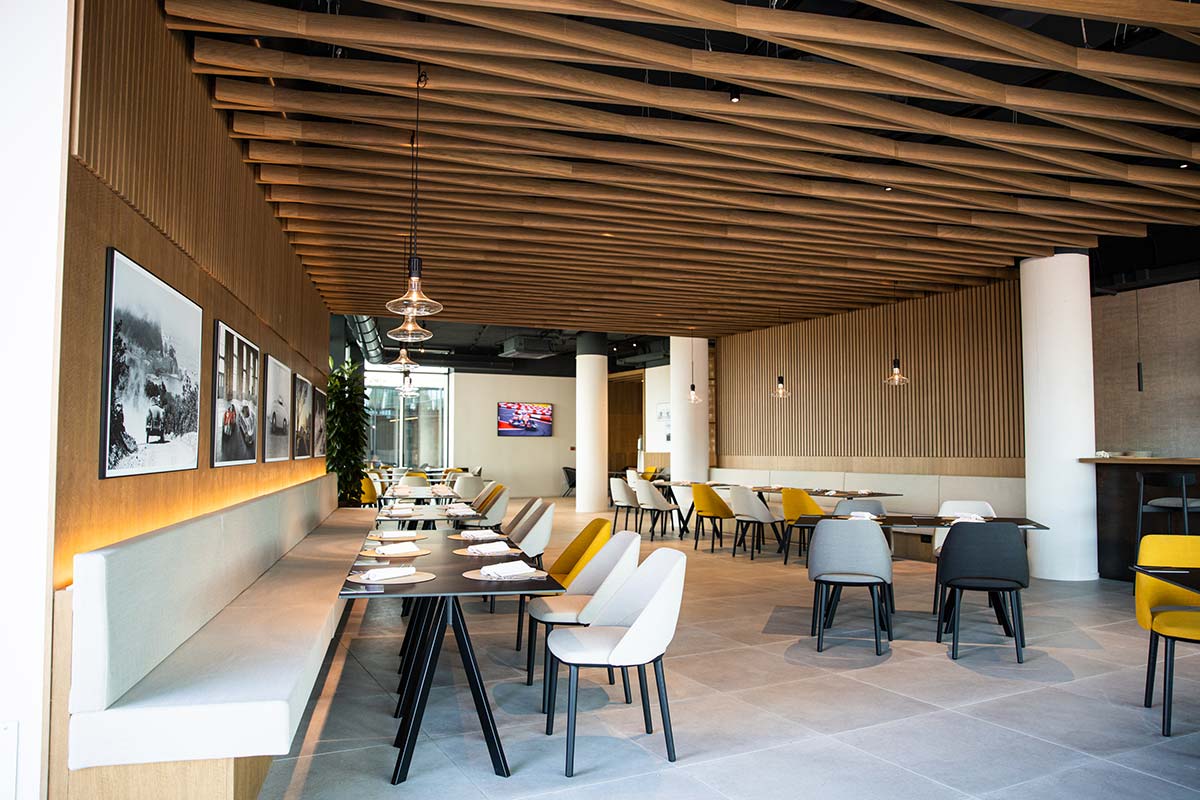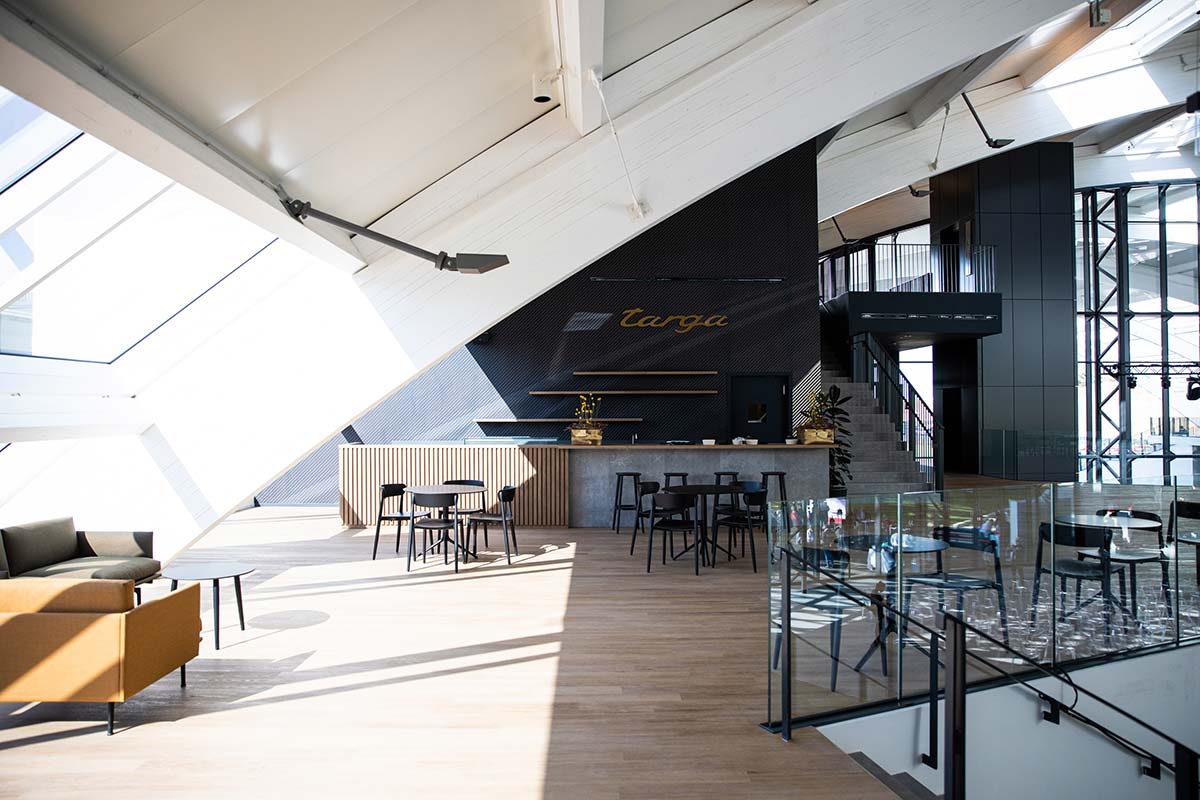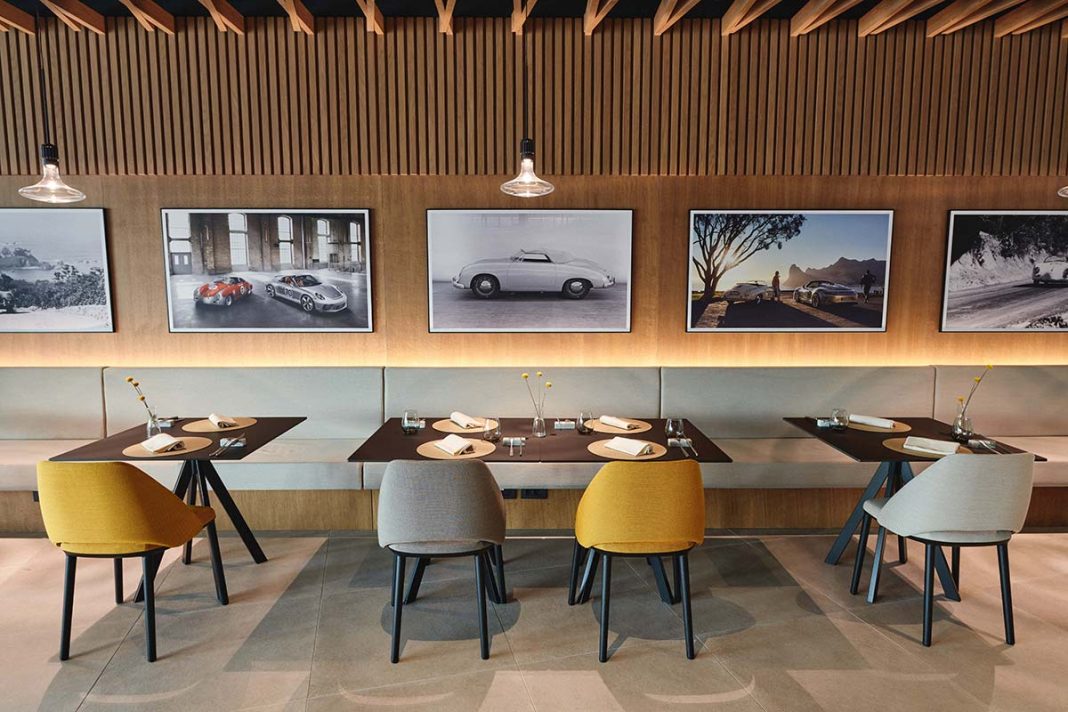Inside the Porsche Experience Center Franciacorta the identity of the brand is a vivid presence. The appeal of cutting-edge technology that has generated the success of the Zuffenhausen-based brand since the 1930s has been translated into architecture capable of creating an all-around experience, underscoring the emotions triggered by the world of Porsche and its sports cars, “simply observed from the outside, or experienced in motion behind the wheel,” says Matthias Müller, CEO of Porsche.
Design, innovation, lifestyle, passion, performance are the values that have shaped the history of Porsche, and they live on inside this new complex located in Franciacorta and set aside for customers and fans. In the facility, everything is based on these principles, from the architecture to the interior design, which has also relied on Pedrali for the furnishings in the public spaces, for an effective synergy of style and thinking.
Designed by the Milan-based studio GBPA Architects, the new Porsche Experience Center is at Castrezzato, in the province of Brescia, on an area of 60 hectares. This is the first such facility in Italy, and the largest in the world. A focus on the environment has guided every phase of the project, from the formulation of the design to its implementation, in line with the strategies of Porsche.


The architectural concept has been studied to recoup the existing buildings as fully as possible, and the entire structure runs on renewable energy. Amidst the green hilly panorama of Franciacorta, the complex takes position with gentle continuity, divided into the Customer Center and the Paddock – a track that will host major motor events, covering three different operative zones: the track with its technology, the safe driving area and an off-road itinerary.
The core of the project is the Customer Center created by starting with a distinctive structure of 11 arches, along an area of 5600 sqm. Like an accessway leading to all the experiences in store for visitors, it centers on a central plaza faced by various services: briefing rooms, a showroom, a panoramic restaurant, a café, shop and kids area. Pedrali’s products are inserted here in a fluid, dynamic way, revealing constant parallels between interior design and automotive styling.


The reception areas stand out for their comfort, with the presence of warm materials like wood and a neutral range of colors. Starting in the Speedster restaurant, where the Vic chairs designed by Patrick Norguet are aligned with this ideal thanks to the ample sizing of the padded seats, offering high levels of comfort in the selected tones of gray and mustard; the chairs are set around the Arki–Base tables, punctuating the panoramic space overhanging the racetrack.
This area also contains the Targa café, whose indoor space furnished with the Nemea chairs created by CMP Design, and the stool from the Babila collection by Odo Fioravanti, leads to a panoramic terrace for viewing of facing events on the track, relaxing on the Reva sofas (designed by Patrick Jouin), featuring a slim perimeter frame in extruded aluminium. The setting is completed by the combination of the Remind seating by Eugeni Quitllet, and the Elliot tables, in a fresh shade of beige and with a light silhouette.


A different style can be seen in the Business Center (seating up to 140 guests) and the Boardroom (for work meetings, also open to other companies for the organizing of events): the high-tech spirit of Porsche emerges in the technical materials and colors (from black to gray, steel to glass). Here again, the design of Pedrali adapts to the context.
The rational, clean look of the Tweet chairs designed by Marc Sadler, and the Ypsilon tables in the tilting version (stackable, with folding tops and equipped with wheels), respond to the requirement of spatial flexibility; they are joined by the rigorous softness of the Elinor managerial armchair, and the linear image of the Arki-Table with its ultra-thin top.










